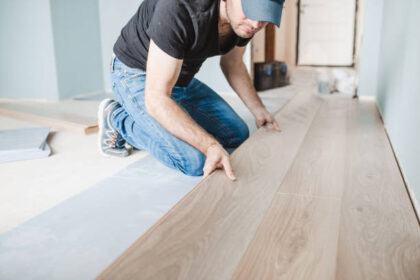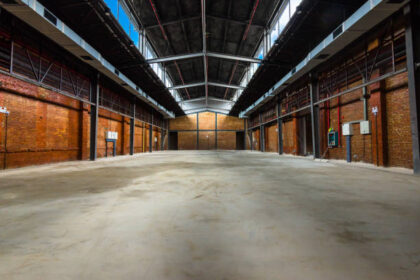Winter in Texas has its own flavor — not brutal but cold enough to make heaters earn their keep. But when the air feels bad, most people blame the weather. The truth? It’s not just the cold outside that’s messing with your comfort — it’s what’s going on inside your heating system. Understanding how heating systems affect air quality is key: how your system runs, breathes, and circulates air directly impacts the indoor environment, dryness, dust, allergens, and overall air freshness.
That’s why indoor air quality in winter matters. When you’re stuck inside with the windows shut and the furnace running 24/7, the air inside can get loaded with dust, allergens, and bacteria. It’s not just about comfort anymore — it’s about health. Poor indoor air can trigger headaches, fatigue, and allergy flare-ups that sneak up slowly but hit hard. You might not even realize it’s your HVAC system working against you instead of for you.
1. The Hidden Tradeoff of Warmth
Every degree of warmth comes at a cost, and it’s not just energy bills. Forced-air heating systems pull moisture out of the air as they run, leaving your home drier by the hour. That’s why skin cracks, sinuses flare up, and static shocks start tagging you like bad karma. Dry air doesn’t just feel uncomfortable — it creates perfect conditions for germs to linger and circulate.
A simple humidity test can tell you more about your air than you might think. Most homes sit below 30% humidity during winter, when the ideal range is closer to 40–50%. Drop below that line, and you’ll start feeling it — scratchy throats, irritated eyes, even cracked wood flooring. It’s not a small detail; it’s a measurable sign that your system needs help balancing comfort with health. A whole-home humidifier can make a world of difference — stabilizing moisture levels, improving sleep, and even helping your heating system work more efficiently.
2. Ducts: The Silent Culprit
When talking about duct inspection benefits, this is where things get real. Ducts are the veins of your HVAC system. If they’re lined with dust, pet dander, or leftover debris from construction, that buildup ends up in your lungs every time the heat kicks on. And since winter means longer run times, those contaminants keep cycling through again and again.
A proper duct inspection does more than spot blockages. It checks for leaks, loose seals, and airflow issues that make your system strain harder than it should. The difference between a clean duct and a neglected one isn’t subtle — it’s cleaner air, better airflow, and an efficiency bump that shows up right on your utility bill.
Professionals use vacuum systems and cameras to clean ducts thoroughly, pulling out everything that’s been hiding for years. If your vents puff dust when the system starts or certain rooms never seem to warm evenly, that’s your red flag waving.
3. Filters and What They Really Do
Filters are the frontline defense for indoor air quality. A clogged or cheap filter traps little and restricts airflow, forcing your heater to run longer to get the job done. That’s wasted energy, more wear on the motor, and dirtier air circulating through your home.
Switching to high-efficiency filters (MERV 8–11) gives your system a real advantage. They catch smaller particles — pollen, dust mites, mold spores — without choking airflow. Just don’t overdo it; those super-dense filters that promise “hospital-grade air” can actually backfire by suffocating your system. Balance matters here. Changing your filter every 1–3 months can extend your system’s life and keep your air cleaner year-round.
4. The Air You Don’t See Still Counts
Homeowners think clean air means clear air, but many pollutants are invisible. Indoor Air Quality (IAQ) devices like UV lights, air purifiers, and humidifiers help eliminate germs and restore moisture. When combined with duct cleaning and filter maintenance, they create a closed loop of clean, balanced air. It’s not about gadgets for the sake of gadgets — it’s about measurable results: lower allergen counts, fewer odors, steadier humidity, and easier breathing all season long. Adding an air purifier to your system can even help protect furniture, electronics, and fabrics from long-term dust damage.
5. Why Routine Maintenance Matters More in Winter
From the burners to the blower motor — when one slips out of tune, it throws everything off balance. Dust collects faster, moisture drops quicker, and the heat you’re paying for becomes less efficient. That’s where professional maintenance steps in. A seasonal service includes full-system checks — burners, filters, ducts, humidity levels, and airflow calibration. It’s not just about cleaning; it’s about optimizing performance and catching small problems before they turn into mid-winter breakdowns.
The Smart Move Before Winter Comes
Air quality issues don’t announce themselves — they creep in. Dry air, rising dust, uneven warmth — all quiet signs that the system’s due for a check. Legacy Air has seen it time and again: homeowners waiting until something breaks before calling. But by then, the damage’s already done. If there’s one move that saves money, time, and comfort, it’s booking that winter maintenance early. Because breathing easy shouldn’t be seasonal — it should be standard.
And when the cold sets in and your family is spending more time indoors, the difference between “warm” and “healthy warm” is what truly defines comfort. Take care of your air, and it’ll take care of you all winter long.



